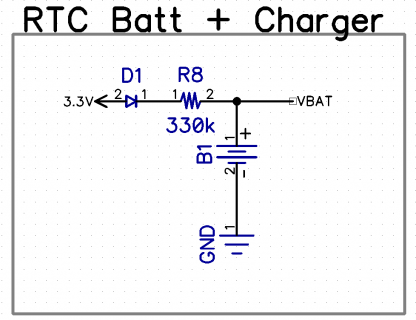I think the biggest update of a superCap is not worrying about lifespan of the battery. That said, I don't know how much one needs to worry about lifespan of the battery.
I don't know if you can expect, say, a simple 150mAh LiPo to be happy at 4.2V for 15 years. If it is, then I'm pretty happy, because a 150mAh lipo is $1-3, and a basic linear charging chip is $0.40 (octoparts common parts library.) + a coupl components, and assuming you have 5V available.
I also know there is some sort of common coin cell rechargable battery, see
https://www.adafruit.com/product/1572. In wins in compactness, but it's not drastically cheaper than a larger lipo from RC tech, simply because I think suppliers are less common for the LIR2450 (i'm sure it's much cheaper for manufactorers.)
*I think what it comes down to* for many many people, the best solution is to use a non-rechargable CR2032 kind of battery. Do you want 10 yrs lifespan? Do 1. If you insist on a 30 yr lifespan, maybe 3 will work for you (I dont actually think they're rated to last that long, but they are quite long-lasting. Eventually self-discharge will get you so increasing capacity doesn't help much).)
the supercap is really cool as a simple circuit design, but it would not be particularly long-lasting compared to any of the battery circuits.
Conclusion: I have argued for the use of the supercap, the large rechargeable battery, or the nonrechargable battery. heh, not very helpful.


